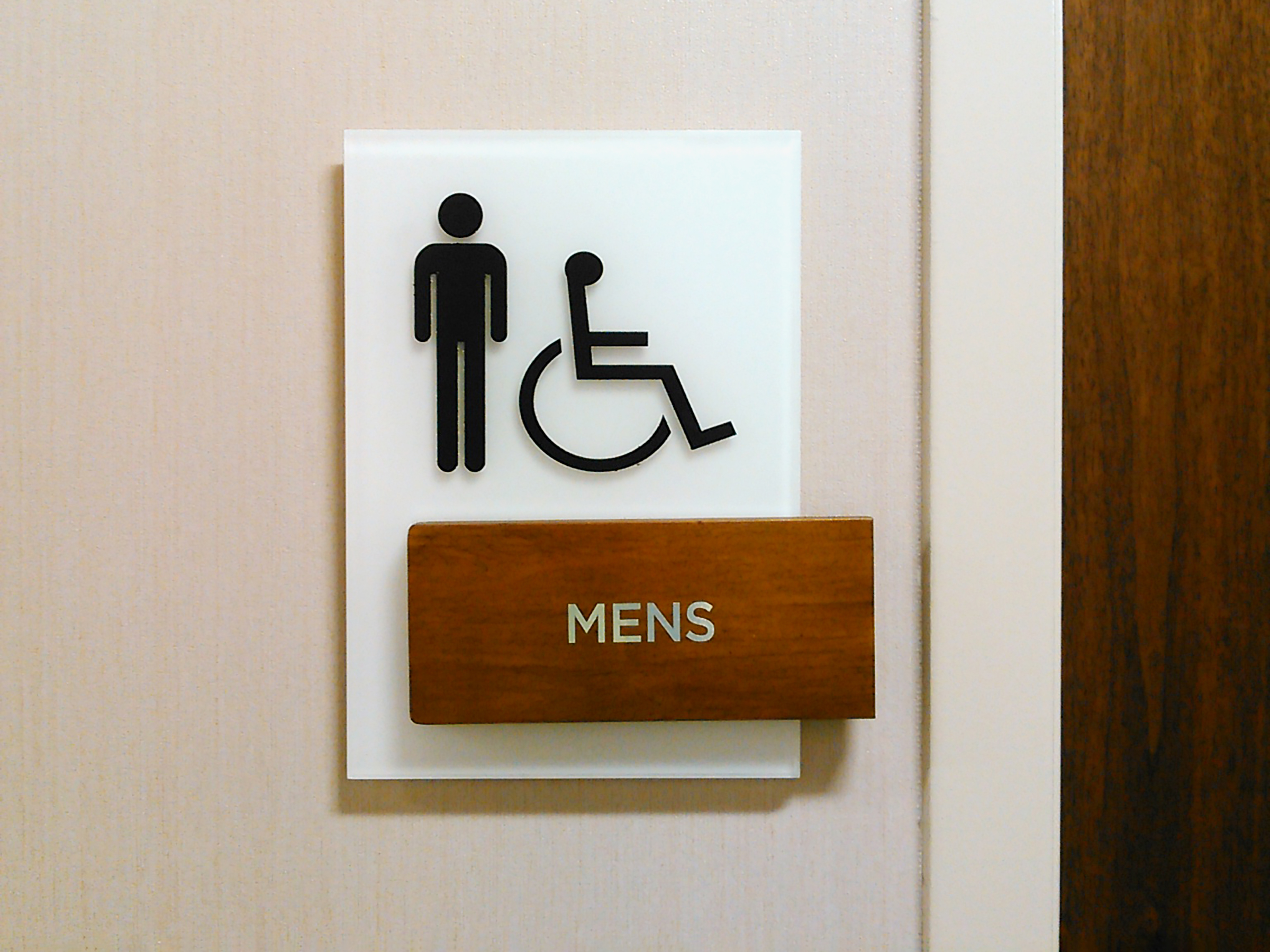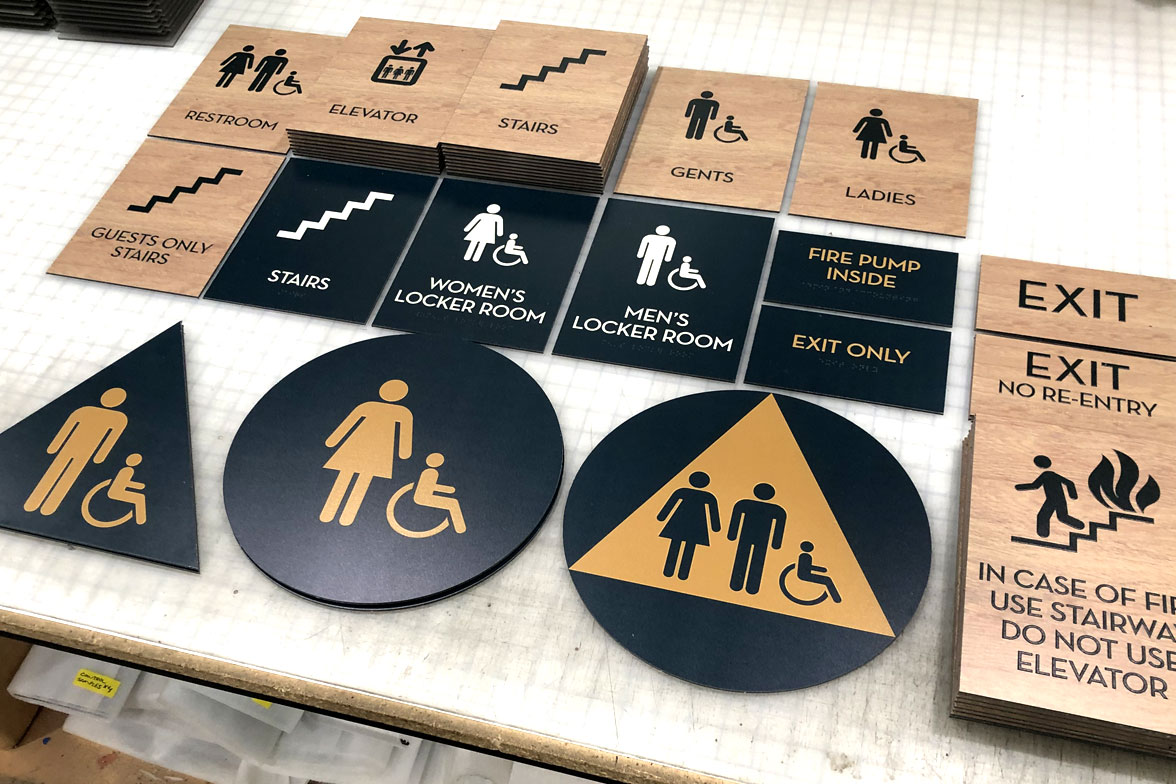Discovering the Trick Functions of ADA Indicators for Enhanced Accessibility
In the world of accessibility, ADA indications act as quiet yet powerful allies, ensuring that areas are comprehensive and navigable for individuals with disabilities. By incorporating Braille and tactile components, these indications break obstacles for the visually impaired, while high-contrast color systems and legible typefaces accommodate varied aesthetic requirements. Their calculated placement is not arbitrary but rather a computed effort to facilitate seamless navigating. Yet, beyond these functions lies a much deeper story regarding the development of inclusivity and the recurring dedication to producing fair rooms. What more could these indications indicate in our pursuit of global availability?
Significance of ADA Conformity
Ensuring compliance with the Americans with Disabilities Act (ADA) is vital for fostering inclusivity and equivalent accessibility in public rooms and work environments. The ADA, established in 1990, mandates that all public facilities, companies, and transportation services fit individuals with impairments, guaranteeing they appreciate the same legal rights and chances as others. Conformity with ADA standards not only fulfills legal responsibilities however additionally boosts a company's reputation by demonstrating its commitment to diversity and inclusivity.
One of the essential elements of ADA compliance is the execution of accessible signage. ADA signs are designed to guarantee that individuals with impairments can quickly browse with structures and areas. These indications need to abide by certain standards relating to size, font, color comparison, and positioning to assure presence and readability for all. Effectively implemented ADA signage helps remove obstacles that individuals with handicaps often experience, consequently promoting their self-reliance and self-confidence (ADA Signs).
Moreover, adhering to ADA policies can minimize the danger of legal consequences and potential penalties. Organizations that fall short to abide by ADA guidelines may deal with penalties or legal actions, which can be both economically troublesome and destructive to their public image. Therefore, ADA conformity is indispensable to fostering an equitable environment for every person.
Braille and Tactile Elements
The incorporation of Braille and responsive components right into ADA signs personifies the principles of availability and inclusivity. These functions are critical for people that are aesthetically damaged or blind, enabling them to navigate public areas with greater self-reliance and confidence. Braille, a responsive writing system, is vital in giving composed information in a style that can be conveniently perceived via touch. It is normally positioned under the corresponding message on signage to guarantee that individuals can access the information without aesthetic help.
Responsive aspects prolong past Braille and include elevated icons and characters. These elements are created to be discernible by touch, permitting individuals to identify room numbers, washrooms, departures, and other critical areas. The ADA sets specific standards regarding the dimension, spacing, and placement of these tactile aspects to enhance readability and make certain consistency throughout various settings.

High-Contrast Color Design
High-contrast color plans play a crucial role in enhancing the visibility and readability of ADA signs for people with aesthetic disabilities. These systems are crucial as they maximize the difference in light reflectance between text and history, guaranteeing that indications are conveniently discernible, even from a range. The Americans with Disabilities Act (ADA) mandates making use of certain shade contrasts to accommodate those with restricted vision, making it an important element of conformity.
The efficacy of high-contrast colors exists in their capability to stand apart in various lighting problems, consisting of dimly lit settings and locations with glare. Normally, dark text on a light background or light text on a dark history is employed to achieve ideal contrast. As an example, black message on a white or yellow background gives a stark aesthetic distinction that helps in fast recognition and understanding.

Legible Fonts and Text Dimension
When considering the style of ADA signage, the selection of understandable typefaces and appropriate text dimension can not be overemphasized. These elements are vital for guaranteeing that indications are available to individuals with visual disabilities. The Americans with Disabilities Act (ADA) mandates that typefaces must be not italic and sans-serif, oblique, manuscript, extremely decorative, or of unusual form. These needs assist guarantee that the text is quickly understandable from a range which the characters are distinguishable to diverse target markets.
According to ADA guidelines, the minimal text elevation must be 5/8 inch, and it should increase proportionally with seeing distance. Consistency in text dimension adds to a natural visual experience, aiding individuals in navigating atmospheres efficiently.
In addition, spacing between letters and lines is indispensable to clarity. Appropriate spacing protects against characters from appearing crowded, improving readability. By sticking to these standards, designers can considerably enhance accessibility, ensuring that signage offers its intended function for all people, no matter of their visual abilities.
Effective Placement Strategies
Strategic positioning of ADA signage is important for making the most of availability and making certain conformity with lawful standards. ADA guidelines stipulate that signs should be mounted at an elevation between 48 to 60 inches from the ground to ensure they are within the line of sight for both standing and seated people.
In addition, indicators should be positioned nearby to the lock side of doors to permit easy identification before entry. Consistency in indication placement throughout a facility enhances predictability, lowering confusion and improving total individual experience.
Verdict
ADA indications play an important function in advertising access by integrating attributes that resolve the requirements of individuals with disabilities. Including Braille and responsive elements guarantees crucial information comes to the click site aesthetically impaired, while Learn More Here high-contrast color pattern and legible sans-serif fonts improve visibility across numerous illumination conditions. Effective placement approaches, such as ideal installing heights and tactical places, additionally assist in navigation. These components collectively foster an inclusive setting, underscoring the relevance of ADA compliance in making certain equal gain access to for all.
In the world of ease of access, ADA indications serve as quiet yet powerful allies, making sure that rooms are comprehensive and accessible for individuals with impairments. The ADA, enacted in 1990, mandates that all public centers, companies, and transportation services suit individuals with disabilities, ensuring they appreciate the same legal rights and opportunities as others. ADA Signs. ADA indications are designed to guarantee that individuals with impairments can conveniently navigate with buildings and areas. ADA standards specify that signs need to be installed at an elevation in between 48 to 60 inches from the ground to guarantee they are within the line of sight for both standing and seated individuals.ADA indications play a crucial duty in promoting ease of access by integrating attributes that address the demands of people with specials needs
Comments on “Exactly How ADA Signs Enhance Accessibility for Everyone”